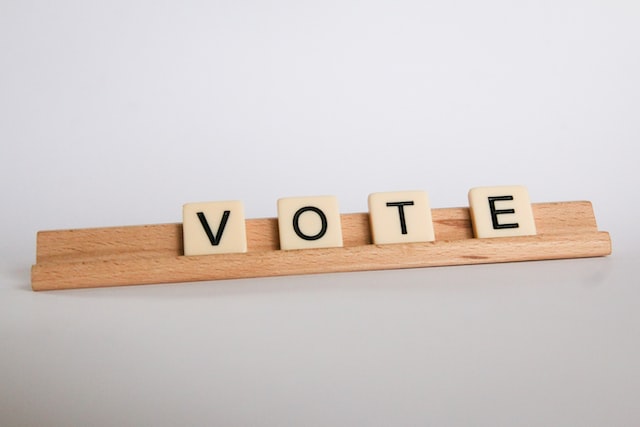
Exploring the Controversy Surrounding the National Voting Rights Act 2022
In the face of mounting pressure from activists and constituents, and in response to Republican-sponsored state voting restrictions, Democrats are trying to pass national voting rights reform. But this has proved to be a challenge.
As a result, many states have resumed their assault on voting access with legislation that would disproportionately impact voters of color. This article explores some of the issues surrounding this growing debate.
Voter Suppression
Efforts to suppress the vote can take many forms, from voter ID laws to purging registration records to gerrymandering. All these measures restrict access to the ballot box and make it more difficult for Americans to vote for candidates who reflect their communities’ interests.
Voter suppression has been a persistent problem in the United States for over 150 years. It has disproportionately affected African Americans, women, and people who are poor, elderly, or members of minority communities.
It is important that all people have the right to vote in a fair and transparent election system. This includes access to early voting, mail-in ballots, and other voter protections.
In addition, state governments should ensure that polling places are accessible to all voters, including those who are disabled or have limited English proficiency. This would help to address discriminatory voting practices that disproportionately affect the rights of low-income, Black, Hispanic and Asian American communities.
So, what’s in the Voting Rights Act 2022? The National Voting Rights Act 2022 aims to ensure that all Americans can vote in a fair and transparent election system. The law is intended to strengthen the VRA by requiring states and localities to submit election laws that discriminate against racial, ethnic, or language minorities to the Justice Department for review before they can be implemented.
Despite the VRA’s enactment in 2013, efforts to suppress the vote are ramping up across the country. States are implementing strict voter ID laws, cutting voting hours, and restricting early voting and mail-in ballots. Congressional representatives have introduced bills that aim to counteract some of these practices.
Voter Fraud
Voter fraud is an illegal act that interferes with the election process. It may occur at any point in the election cycle, from registering voters to submitting ballots to counting them. It is usually done in concert with others to affect the outcome of an election.
In the United States, voting is a right that many Americans take very seriously. Congress and state governments should ensure that everyone can vote freely and without fear of intimidation or fraud.
However, even a small percentage of voter fraud could change the results of an election and influence the final result. This is a serious problem that can have significant consequences.
Some types of voter fraud include:
Illegal registration and voting, by individuals who are not U.S. citizens or who are convicted felons.
Changing the vote count at a precinct or at a central location where votes are counted; casting more than one ballot per voter; and making changes to an election software program.
In some cases, fraud can be committed by a single individual, although this is rare. It often involves a person committing the crime with another trusted individual who is familiar with the software and how to manipulate it.
A person who knowingly commits voter fraud faces serious criminal charges. These charges can lead to jail time and hefty fines. In some states, laws make it harder for people to commit voter fraud.
Voter Registration
Voter registration systems vary widely from country to country and sometimes among lower jurisdictions such as states or provinces. In some nations, voter registration is the individual’s responsibility and voter registration forms are available only at government offices; in others, voter registration is compulsory or required by law. In both cases, the registration system is designed to make it as easy and convenient as possible for potential voters to register.
In the United States, voter registration is generally required by law and includes some form of documentation that proves one’s citizenship or eligibility to vote. Most jurisdictions have public registration agencies or other locations where citizens can register to vote.
Some jurisdictions require all new voters to provide identification, such as a driver’s license or DMV-issued nondriver’s ID card. The identification requirements are often viewed as an important step towards ensuring that all voters have access to the ballot box.
The Voting Rights Act outlawed a number of barriers to voter registration, including fees and literacy tests that in practice discriminated against racial or ethnic minorities, language minorities, and other groups. The act also included a coverage formula that identified jurisdictions that were likely to face serious discriminatory voting practices, and it required covered jurisdictions to obtain “preclearance” from the U.S. Attorney General or the District Court for the District of Columbia before making changes to election laws and procedures that have the potential to discriminate on account of race, color, or membership in a language group.
Vote Counting
In any election, there will be a series of steps that ensure the vote count is accurate. These include counting ballots at polling places, adding provisional and absentee ballots to the total, and completing a process called “canvassing” to make sure no clerical errors occur.
There are a number of different ways to count ballots, including hand counting, machine counting, and auditing. While machines are the preferred method for quick results, they can be susceptible to errors that aren’t obvious right away.
Vote counts also depend on the type of election system used. Typically, there are two types of elections: candidate and party list. In a candidate election, candidates are chosen through a majority vote system (first-past-the-post).
A party-list election is based on a proportional representation system where all candidates have a quota of votes. Each candidate must receive a certain percentage of the quota to be elected.
At least 20 bills pre-filed and introduced in seven states would restore voting rights to individuals with past convictions or expand current voting rights restoration policies.
In addition to voting rights restoration, at least 34 bills that have been pre-filed and introduced in 12 states will ease the registration process for voters. These bills range from allowing people to register or change their voter status at any time to making it easier for individuals to obtain photo identification and vote early.
